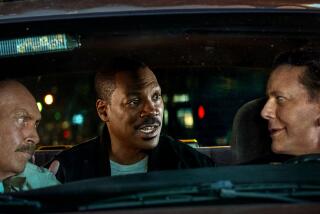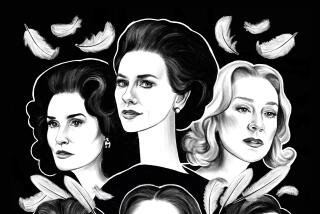On ‘Boomerang’ and Issues of Black and White : Director Reginald Hudlin: Time to End the Double Standard
- Share via
In the heart of Kenneth Turan’s review of “Boomerang,” he complains about Eddie Murphy’s character not being a “hustler” and calls the film’s setting among black professionals “silly and arbitrary” and not “dramatically motivated” (“ ‘Boomerang’: Eddie Murphy’s Romantic Fling,” Calendar, July 1).
If this were a movie with rappin’, gun-totin’ drug dealers, it would be praised for its gritty authenticity while the complaints would be about encouraging violent behavior in the wake of national riots.
Instead, a movie that shows successful African Americans in the business world offends Turan because there aren’t enough white people in it. I guess the huge number of films that show a “positive” image of white life aren’t enough for him.
Perhaps if the publication Turan writes for and the neighborhood he lives in were better integrated, he would have a better idea of the reality of black life in America. I recommend that he leave the darkness of the screening rooms and take a walk in the streets of the city where he lives.
“Boomerang” is set in New York City, where the majority of the population is black and Latino, like most urban centers in America. There are more white people in “Boomerang” than all the black people in Woody Allen’s films put together. Which is the more accurate depiction of New York’s racial makeup?
For another cinematic confirmation of the New York I see every day, take a look at “Something Wild” by Jonathan Demme.
When a film like “House Party” or “Boyz N the Hood” has a predominately black cast, there aren’t complaints about not seeing enough white people. But portraits of black middle-class lifestyles, like “The Cosby Show” and “Boomerang,” are considered unrealistic.
Looking at films like “Ghost” and “Housesitter,” you’d never know that the majority of people on welfare are white. Yet no one takes them to task for an inaccurate portrayal of “typical” white people.
Those who consider the setting of “Boomerang” a fantasy should look no further than the successful black companies behind the camera: Eddie Murphy Productions, based in Los Angeles; Hudlin Bros., based in New York, and LeFace Records, based in Atlanta.
But perhaps the black presence behind the camera is the root of the problem. When Eddie Murphy made “Coming to America” with a white director, no one complained about its predominately black cast.
Although Woody Allen makes films that have an unnatural racial skew, both Eddie Murphy and I can see past that and enjoy a movie like “Annie Hall.” Too bad Turan could not overcome his prejudices and enjoy our film.
Fortunately, audiences across the country are not encumbered by the same racial hangups as Turan and turned “Boomerang” into a hit film. It’s unfortunate that he could not appreciate the witty performances of Eddie Murphy and the rest of the cast, but he can refer to Time and Newsweek, among others, for insight on why the film works for everyone else.
More to Read
Only good movies
Get the Indie Focus newsletter, Mark Olsen's weekly guide to the world of cinema.
You may occasionally receive promotional content from the Los Angeles Times.










